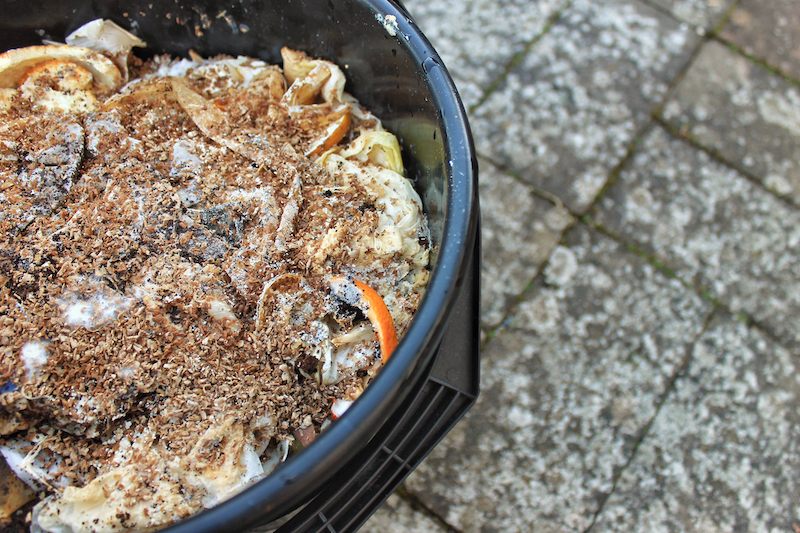
This week is Compost Week. So in this three-part blog series, we’re digging into sustainable, garden-loving ways to deal with food and plant waste at home or in your workplace.
We’re starting with Bokashi, then taking a look at worm farming and composting. Each method has its pros and cons, but there’s almost certainly a way you can start composting that suits the people, available space and waste output in your household.
Bokashi is a great ‘composting’ option to deal with food waste when outdoor (and indoor) space is at a premium. A healthy bokashi system is compact, doesn’t smell, and deals well with most food waste. We have a Bokashi bin at ecostore HQ. It sits in the kitchen, and we’re in the habit of feeding it with our leftovers, apple cores and banana peels. Once a bucket is full, our awesome team member Angie takes the bucket home for her garden.
As its name and compact design suggest, Bokashi originated in Japan. Meaning ‘fermented organic matter’, the Bokashi system breaks down your food waste in an anaerobic (oxygen free) environment. The result is nutrient-rich compost that you can dig into your garden or container garden.
How does Bokashi work?
Bokashi is easy to set up and a system costs about $200 for two Bokashi buckets and around 8 litres (in bags) of Bokashi mix.
A working system contains an inner and an outer bin. The outer bin is water and airtight, while the inside bin has holes for drainage, and sits inside the outer bin. You then add food waste and layer it with a sprinkle of Bokashi mix. Micro-organisms in the mix (which looks a bit like sawdust) stop the food waste from putrefying, and start ‘pickling’ it. You should be able to smell this process.
When a bin is full, you take its contents outside and bury them in your garden or containers. Now that there’s oxygen in the mix, the micro-organisms will break down the waste even faster, feeding the soil with nutrients and beneficial microbes. Some people don’t bury their fermented scraps, but be prepared for some push back from your neighbours as the smell wafts over your fence.
As the food ferments in the bucket, the solid waste will reduce in volume as the water content drains away into the outer bucket. This ‘juice’ can also be diluted with water and used on your garden or sprayed on your plants.
For best Bokashi results
- Keep the bin airtight when you’re not adding food scraps
- Store your Bokashi bin in a warm place (but out of direct sunlight), to encourage microbial activity
- Keep it near the kitchen so it’s convenient to use
- If you live in a mild climate, you can keep your Bokashi in a shady outdoor spot: but watch for frosts
- Pop the below list of dos and don’ts on the fridge while you introduce your household to Bokashi
- Remember to drain the juice off and add Bokashi mix regularly
Do Bokashi
- Fresh fruit and vegetables including cores and peels, citrus, banana, vege peelings and wilted salad leaves
- Cooked and uncooked meats, and fish
- Prepared foods like pasta, rice, porridge…
- Cheese, bread, eggs, tea bags, coffee grinds
- Fresh cut flowers that are past their best
Don’t Bokashi
- Liquids: oils, juice, coffee (liquid) or milk
- Paper, tinfoil or plastic wrap
- Large, hard meat bones
For loads of handy tips and useful information on getting the best from your Bokashi, see Bokashi One and ZingBokash
And keep an eye out for a giveaway at the end of the week.

